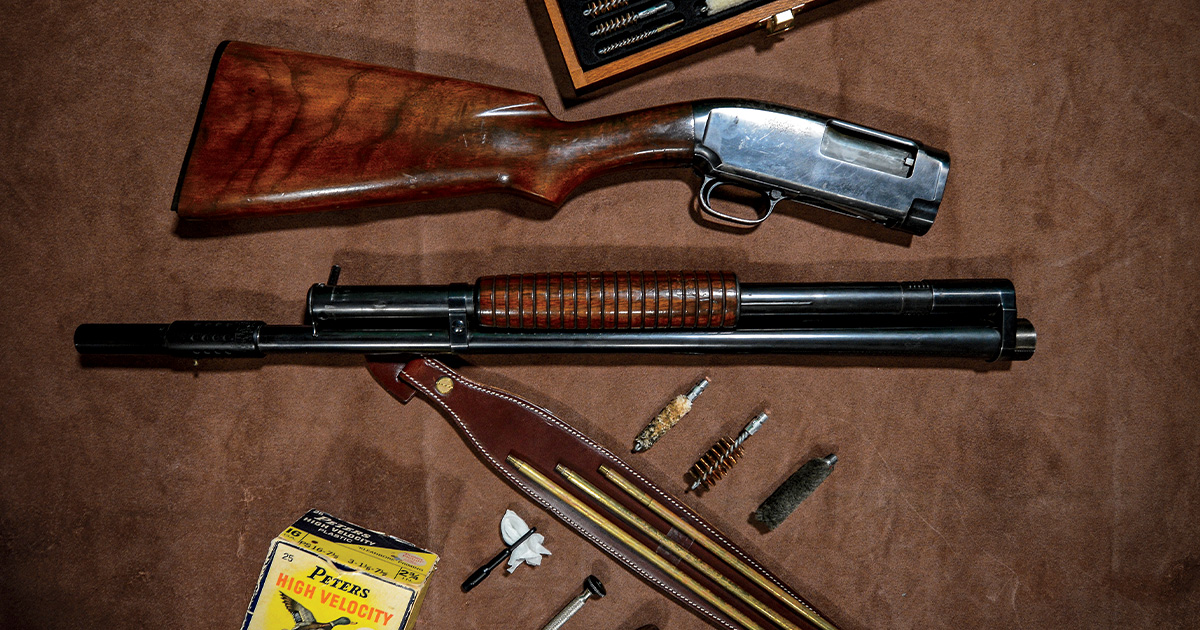Shotgunning: Timeless Tools
Tips for enjoying waterfowling with a classic shotgun
Tips for enjoying waterfowling with a classic shotgun


Some older shotguns need a little extra care when they are exposed to the wet and muddy conditions that are often encountered on a waterfowl hunt.
There are plenty of good reasons to hunt with an older gun. You might have a family heirloom you’d like to use, or you might prefer walnut and steel to plastic and camo. The length and heft of older shotguns make them easier for some people to shoot. And an old duck gun can be a bargain on the used market. Plenty of older guns have a lot of use left in them, and you shouldn’t be afraid to bring one to the blind. Use the right ammunition and perform some regular maintenance on your classic scattergun and you can hand it down to the next generation.
Most shotguns made since the mid-1980s were designed with steel shot in mind. Some guns made prior to that are strong enough for steel too. Check with the manufacturer to see if your gun is safe to use with steel shot. Otherwise, bismuth shot is the safest bet. Many older duck guns have fixed full chokes, which are not ideal for steel shot. Bismuth, which often patterns more openly than steel, is a good fit for a full choke. Alternatively, you can send your gun to Briley Manufacturing for steel-rated choke tubes, and in some cases you can find newer steel-rated barrels for older guns.
Factory finishes protect your gun’s wood from moisture. You can protect unfinished interior wood surfaces with a coat of wax prior to the season. Renaissance wax, originally developed for museum artifacts, is perfect for shotguns. Use it sparingly, rubbing it on with a clean cloth. Take the time to remove pads, grip caps, forearms, and even the stock. Underneath you will find unfinished wood that can benefit from wax protection. The wax can also be used to clean and protect metal, as can a light film of oil.
Caring for a classic shotgun in the field begins with a soft gun case that is padded and waterproof. An unpadded sleeve is fine for keeping mud off a synthetic-stocked shotgun on the back of an ATV, but it will do little to prevent dents in the wood of an older gun. Choose a case with a shoulder strap and use it to carry your gun to the blind. As great as waterproof cases are for protecting guns in the field, they do not breathe, and if the inside of a case is wet, it’s a bad place to store a gun on the drive home or at camp. A blued gun in a wet case can rust very quickly. Silicone gun socks offer much better rust protection, so keep one in your vehicle for transport, as well as a case that zips shut if that’s what the state law requires.
After the hunt, take the gun out of its case and wipe down the metal with a lightly oiled rag. You can also use a bit of WD-40 on the external metal if you’d like, as it displaces water. At home or at camp, clean mud off the stock with a rag or even soap and warm water, use a soft toothbrush to clean the checkering, and dry the wood with a clean cloth. Never use gun oil on a wood stock. Next, give the bore a good cleaning. Older bores and chambers will rust much faster than the chrome-lined barrels we’re used to. It’s always good to use gun oil sparingly, and that’s especially true with wood-stocked guns. Excess oil can run down from the action into the stock’s head. Store your gun in a silicone sock when you put it away.
We all know that a shotgun that is subjected to the rigors of waterfowling will likely show some scars. Still, there are times when those of us who prefer older wood-stocked guns should leave them at home. Metal-framed pit blinds and rocks will chew up a wood stock. A salty environment can rust an old gun badly. You can find synthetic stocks for older guns, and you can swap synthetic for wood and back again as needed. Or you can keep a modern backup shotgun for those days when the old gun should sit home in the safe.
Ducks Unlimited uses cookies to enhance your browsing experience, optimize site functionality, analyze traffic, and deliver personalized advertising through third parties. By continuing to use this site, you agree to our use of cookies. View Privacy Policy